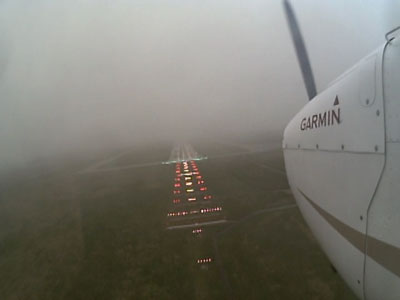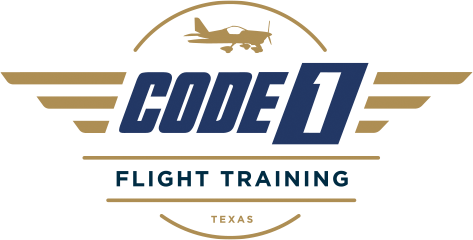When to use VFR Flight Following on an IFR flight

Ever had one of those IFR flights where ATC vectored you all over in complex airspace, wouldn’t let you climb or descend in a timely fashion, or vectored you around a MOA that is bigger than most New England States? I’ve had a bunch of them over the years, and several recently. I’ve been flying to South Texas from East Texas a lot lately the heavy traffic going from the DFW area to the Houston area in the middle teen altitudes slows my climb and the MOA’s around San Antonio get in the way frequently. How can a pilot handle the situation in a professional manner so he gets what he wants, but also doesn’t put the controller in a bad position? Here’s some options that might help:
Cancel IFR and get VFR flight following
Obviously, you must have VFR conditions for the remainder of your flight, but that is often the case. Most pilots are slow to switch from IFR to VFR, but it is a real possibility, and it won’t offend ATC. ATC exists primarily for IFR traffic, and they must provide a buffer of space (5 mile lateral/ 1000′ vertical) around IFR traffic from other IFR traffic. While VFR advisories are provided at the pleasure and availability of the ATC controller, most controllers want to talk to VFR aircraft flying their sector, so most will accept requests for VFR advisory service. When an aircraft is flying VFR, it provides the the controller more ability to maneuver you. Ever notice that ATC will advise you of other nearby IFR traffic, but , even if you announce that you see the traffic, ATC will not allow you to descend (for example) until that traffic is beyond the prescribed buffer space? Had this traffic been VFR, upon receiving a “traffic in sight” call from both aircraft, the IFR aircraft would have received a clearance to descend along with a directive to “maintain visual separation”. For the VFR aircraft (that’s you if you had cancelled IFR to obtain advisories), ATC would have provided “advisories” of the IFR aircraft’s position and possibly a heading or altitude suggestion only.
I just landed in Lufkin (LFK) on a flight from Lakeway Airport (3R9). I took off under VFR from 3R9 and picked up my IFR clearance at about 2000 ft during climb out. Much to my chagrin, the clearance was, “Cleared to LFK via DIRECT Centex VOR, 040 degree radial to the 56DME fix, Leona VOR, Direct LFK”. That is a horrible clearance to fly (not to mention input into the Garmin 530), but I understood that the controller was hamstrung in making it any easier for me under IFR. He seemed really relieved when I requested to “Cancel IFR and proceed with VFR flight following”. I kept my same squak turned the airplane directly to LFK and had a super flight. In this case going from IFR to VFR advisories saved me about 10 minutes travel time and a few headaches.
Request a VFR climb while IFR
Yes…you can do this. If you don’t want to cancel IFR for the whole flight, but have VFR weather during the climb, you can be on an IFR clearance and request the climb portions of the flight under VFR. This method can get you out of congested airspace quickly. Again, just like VFR flight following, the controller will probably be pleased that you asked for this clearance. It allows you to get out of their way so they can focus on the airplanes slugging it out in the congestion. You must make the request as ATC cannot recommend it to you.
About those MOA’s
You will not be cleared to enter an active MOA (Military Operations Area) while operating IFR in an “N” register aircraft. It is just that simple. An ARTCC usually is the controlling agency for a MOA (See a VFR Sectional legend for specific MOA’s), but they pass off this control to the military controllers when the MOA’s are active. Usually a military entity will control their own aircraft in the MOA (via a UHF frequency), so you’ll not be able to talk directly to the military controllers (usually). However, ARTCC does not blindly hand over control, they still know what type aircraft are operating and are still ultimately responsible for what goes on in the MOA. So, you can always clarify the situation going on inside a MOA with ARTCC.
You can fly through a MOA in under VFR. There is no prohibition, but caution should be advised. A little MOA discussion…a MOA is airspace where military aircraft can fly in a manner that limits their ability to see and avoid. They can fly formation, increase their speeds, perform abrupt maneuvers, and fly military training missions. There’s no bullets flying, no invisible hazards, and it’s totally legal to fly there VFR…but the military guys might be going fast and not looking outside as much.
Having said all of this about MOA’s…it is also advisable to use the freedom you have as a VFR aircraft in MOA’s with discretion. Remember, ARTCC knows exactly what type airplanes are in the MOA and they know where they are working in the MOA. If there are five T-38’s in a small MOA, don’t enter. Although you can legally, it is not prudent for it is just too crowded and you will certainly “mess up” the best laid plans a probable big training mission and you definitely won’t make any friends with the controllers or military pilots. If the MOA is the size of Vermont and there’s one F-16 operating in the north end, you can certainly cross the southern end VFR without being a nuisance. My point…ask ARTCC, get the “big picture”, and make a decision based upon the Golden Rule.
IFR at an uncontrolled field
ATC can only have one aircraft at an uncontrolled airfield at one time, and you may be limiting someone else if you are still operating IFR in MVFR or VFR conditions. For instance, some aircraft are required to operate only under IFR (some Part 135, some Part 121, and some commercial operators for example) and may have to sit on the ground awaiting your cancellation in order to depart. I’ve also flown over an airport in a holding pattern awaiting the aircraft below me to cancel IFR. ATC won’t let me others in until you cancel. To make it easier on everyone else, cancel early if the weather allows.
In a nutshell
ATC does not care if you cancel IFR or not as long as the weather is actual VFR. They have no affinity for VFR vs IFR, and simply want to move aircraft about the NAS as safely and expeditiously as possible. If on an IFR flightplan, consider canceling IFR if the weather is good and the congestion high. Remember, a radar controller sits in a dark room with no ability to see the weather you are experiencing. You must initiate the request. I hope this helps you get more direct routing with good climb/descent clearances.
About the author
Joe Casey is an ATP, CFI, CFII, MEI, CFI-G Commercial Pilot - SE, ME, Rotorcraft, Glider US Army AH-64 Pilot and UH-60 Instructor Pilot and Instrument Flight Examiner. View more of his posts at flycasey.com
Contact Code 1 Flight Training
Call or text Norm Rathje at 210-884-2559 or email norm@code1flighttrainig.com
